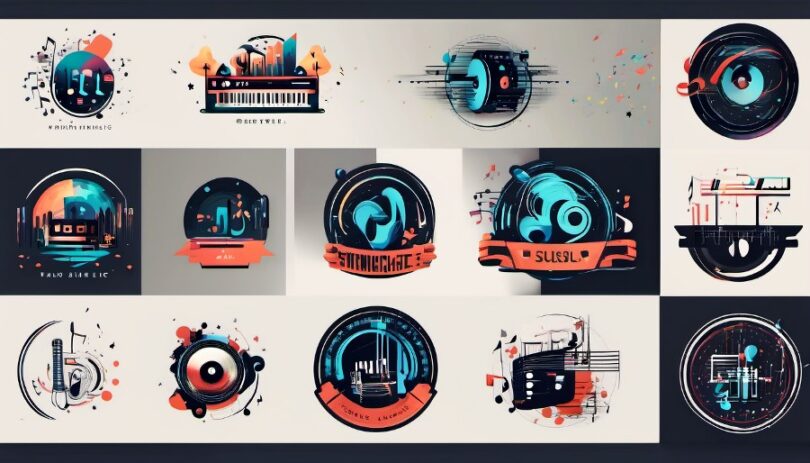In the realm of music, where melodies and rhythms collide to create something truly transcendent, there exists another layer of connection that often goes unnoticed: the visual identity of music through logos. These symbols serve not just as marketing tools, but as extensions of the artist’s identity, encapsulating the essence of their music, ethos, and influence in a single design. This exploration delves into the power of music logos, their evolution, and their profound impact on fans and the industry alike.
Visual branding in music is as old as the industry itself, but its significance has amplified in the digital age. The logo, once a mere identifier, has morphed into a critical element of an artist’s overall brand, shaping perceptions and building a visual narrative that complements the auditory experience. From the Rolling Stones’ iconic tongue and lips to the enigmatic BTS logo, these symbols transcend language and culture, becoming universal emblems recognized around the globe.
The impact of a well-designed logo in music can be monumental. It can enhance the fan experience, creating a symbol around which communities form. Merchandise adorned with band logos becomes more than just clothing or memorabilia; it’s a badge of identity, a way to belong to something larger than oneself. This is evident in the wave of merchandise from bands like Nirvana or Metallica, whose logos have become iconic symbols worn by generations of fans.
The BTS logo, representing doors opening to the future, showcases how logos can evolve alongside the band. This adaptability speaks to the dynamic nature of music and its ability to change and grow with time. It’s a reminder that logos, much like the music they represent, are not static; they are alive, evolving entities that reflect the journey of the artist and their audience.
The genesis of music logos often begins with the artist’s desire to manifest their musical identity visually. Take, for instance, the Beatles’ drop-T logo, which is as emblematic as their harmonies. Or consider Led Zeppelin’s Zoso symbol, shrouded in mystique, much like their music. These logos are not random drawings but are imbued with stories, meanings, and a sense of belonging. They become synonymous with the music itself, a visual shorthand for the artist’s brand.
In the context of concerts and music festivals, logos take on a new life. They transform stages into sanctuaries, spaces where the visual and auditory merge to create immersive experiences. The visual branding of music festivals, with their eclectic logos, sets the tone and vibe, drawing in crowds with the promise of a unique, shared experience. These logos become symbols of memorable moments, encapsulating the essence of the live music experience.
The digital era has further expanded the role of logos in music. Social media platforms and streaming services have become the new arenas for musical discovery, where a logo can be the first point of contact between an artist and a potential fan. In this context, a logo’s ability to communicate an artist’s identity at a glance becomes invaluable. It’s a visual hook that can intrigue, invite, and inform, opening the door to deeper engagement with the music.
As we navigate through the visual landscapes of music, from vinyl records and concert posters to digital thumbnails on a streaming platform, the significance of logos remains undiminished. They are more than just marketing tools; they are integral to the music experience, offering a visual anchor for our auditory adventures. The stories behind these logos, the emotions they evoke, and the communities they build, highlight the profound connection between visual art and music.
In conclusion, the journey of music logos from simple identifiers to powerful symbols of identity and belonging reflects the evolving landscape of music itself. These logos tell stories, evoke emotions, and build communities, serving as the visual heartbeat of the music they represent. As we continue to explore new sounds and rhythms, the logos accompanying them will remain vital, visual echoes of the music that moves us.








